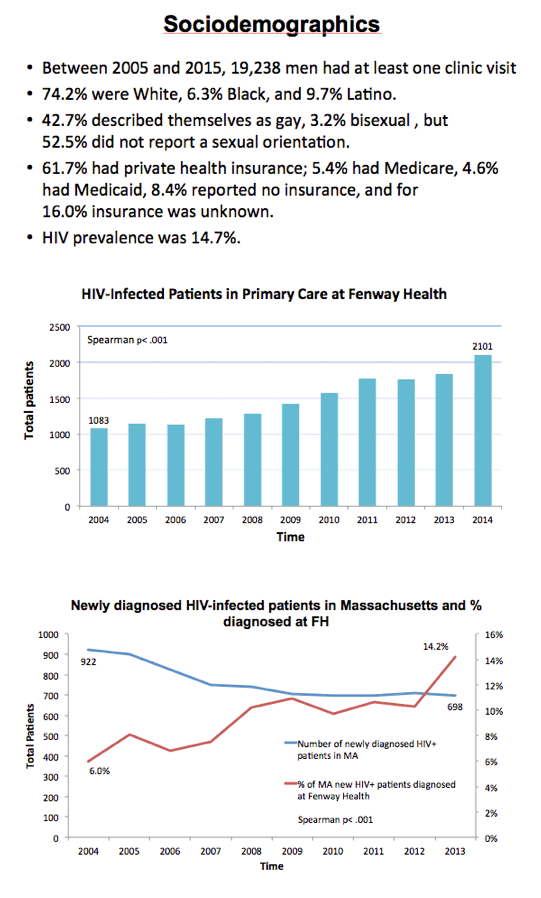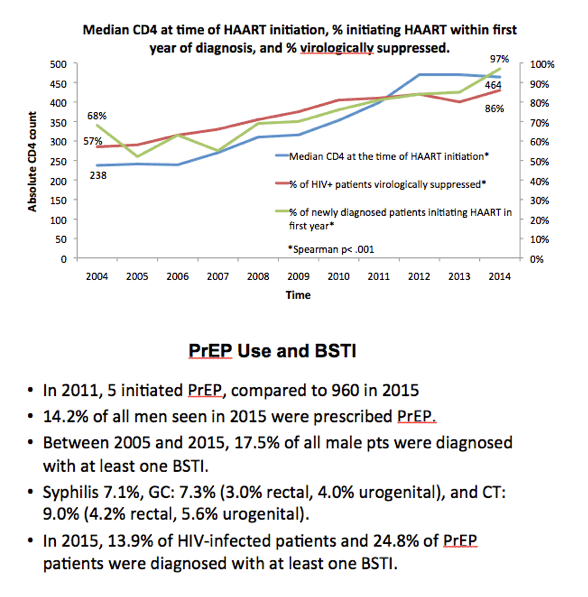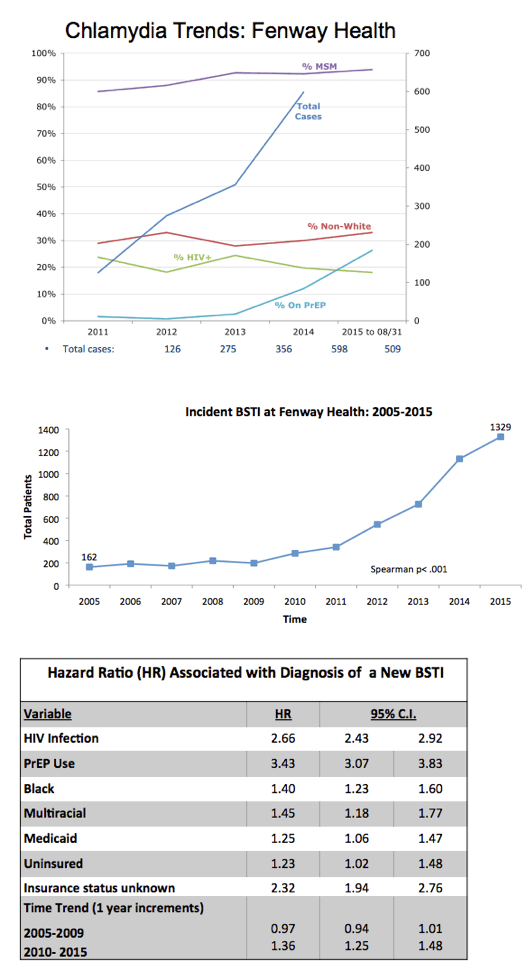 |
 |
 |
| |
HIV Infection and PrEP Use are Independently Associated with Increasing Diagnoses of Bacterial Sexually Transmitted Infections (BSTI) in Men Accessing Care at a Boston Community Health Center (CHC): 2005-2015
|
| |
| |
Reported by Jules Levin
IDWeek 2016 Oct 26-30 New Orleans
IDSA: Meta-Analysis Sees Much Higher STI Risk in MSM On vs Not On PrEP -- (10/31/16)

Program abstract:
Background: As HIV has become a chronic manageable infection, and the efficacy of pre-exposure prophylaxis (PrEP) has been demonstrated, concerns have been raised that decreasing condom use might be associated with increasing rates of BSTI. Analysis of trends in specific groups of patients acquiring new BSTI may enhance clinician awareness of whom will benefit from more frequent screening.
Methods:Fenway Health, an urban CHC, provides primary and HIV, STI and LGBT specialty care to more than 27,000 patients annually, and has used an electronic health record since 1997. To assess secular trends in BSTI diagnoses, multivariable Cox proportional hazards models were fit, controlling for participant age.
Results:Between 2005 and 2015, 19,238 men had at least one clinic visit. Most (74.2%) were White, 6.3% Black, and 9.7% Latino. Almost half were gay (42.7%), bisexual (3.2%), but 52.5% did not report a sexual orientation. Most had private health insurance (61.7%); 5.4% had Medicare, 4.6% had Medicaid, 8.4% reported no insurance, and for 16.0% insurance was unknown. HIV prevalence was 14.7%. In 2011, 5 initiated PrEP, compared to 960 in 2015; 7.2% of all men were prescribed PrEP (14.2% of men seen in 2015).. Between 2005 and 2015, 17.5% were diagnosed with at least one BSTI; 7.1% acquired syphilis, 7.3% acquired gonorrhea (3.0% rectal, 4.0% urogenital), and 9.0% acquired chlamydia (4.2% rectal, 5.6% urogenital). In 2015, 13.9% of HIV-infected patients and 24.8% of PrEP patients were diagnosed with at least one BSTI. In age-adjusted multivariable analyses, the following characteristics were independently associated with acquiring a new BSTI:

Conclusion: PrEP use and HIV infection were each associated with increasing BSTI rates in a Boston CHC over the past decade. BSTI were more common among men of color and/or those without stable health insurance. Increased BSTI screening and education is warranted for patients in these subgroups.






|
| |
|
 |
 |
|
|